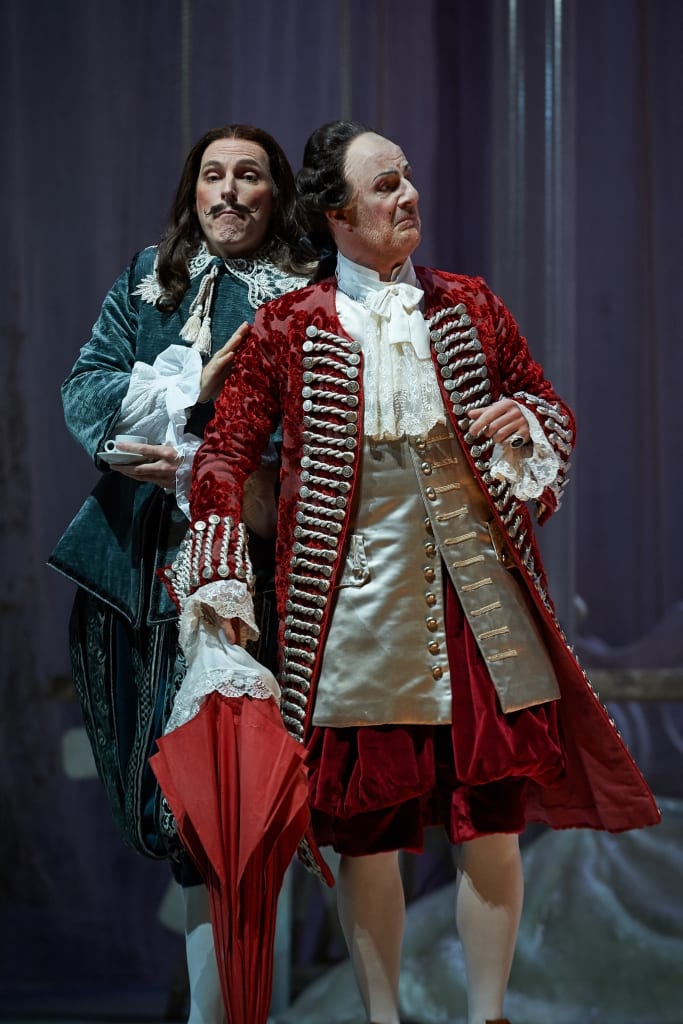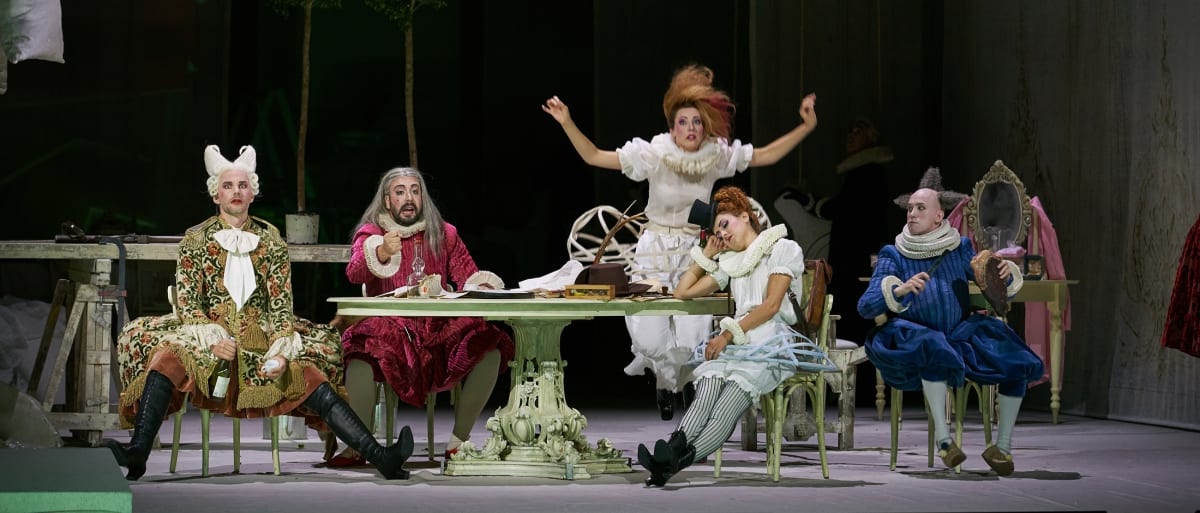The life of Alessandro Stradella, the 17th-century composer whose colourful affairs paved the way to his contracted murder, inspired several nineteenth-century operas. Salvatore Sciarrino’s recent turn to such intrigues charts a different path, in that Stradella is not a character in Ti vedo, ti sento, mi perdo (“To see you, to hear you, to lose me”). Rather, his absence (as suggested by the Beckettian subtitle “Waiting for Stradella”) shapes the story of a performance troupe rehearsing a Stradella cantata connected to the Orpheus legend, all the while expecting a newly written aria from the composer. An array of commedia character types frames the performers, who rehearse for years until news of Stradella’s death brings everything to an end.
The idea of absence, or partial presence, guides much of the aesthetic of this co-production, which premiered at La Scala last November and now rounds out the season at Berlin’s Staatsoper Unter den Linden. Set designer George Tsypin demarcates the onstage rehearsal platform with translucent pillars and diaphanous drops—all exquisite but barely there. Sciarrino’s self–written libretto itself conveys the sense of incompleteness through its aphoristic, repetitive utterances. A conceptual and strongly visual composer, Sciarrino follows suit with musical textures that often feel outlined or hollowed out, with inner lines evocatively wispy and fleeting in nature. In addition to orchestral musicians in the pit, several historically costumed musicians frame the stage (others, including a pianist, are out of view), sometimes delineating the layers of the play within a play. Stradella’s melodies sound occasionally, with Sciarrino’s spare harmonies suggesting a tenuous grasp on both the elusive Baroque composer and history more generally. A Gesualdo-inspired Intermezzo yields the fullest texture, closing the first of two acts with a lively Venetian masquerade procession.

Jürgen Flimm’s stage direction reaches inevitable crossroads in attempting to sustain visual interest in a drama centered on waiting. Many extras take up background business, including a full ensemble of child dancers, whose added value to the production is questionable. An octet of stage hands in black with period ruffs fare better, especially when they imbibe generously after serving a meal, but freely comic moments are rare. The explicit commedia framework and pacing it suggests are mostly stifled in such an absurdist work, although lazzi are not absent. Much physical gesture springs from the music and text, such as the ripple effects of the hunter’s stuttering, but in a manner that gradually loses effectiveness. An oft-used unsettling percussive backdrop—an eerie rumbling wind sound created on a metal sheet and suggestive of tension—also wanes in impact, as likely intended. Conductor Maxime Pascal deftly coordinates the disparate musical forces.
The singers are very present, and deliciously costumed with period flair by Ursula Kudrna. Laura Aikin, who created the role of the singer in Milan, negotiates wildly uneven vocal terrain with aplomb. As the gossipy composer and writer, Charles Workman and Otto Katzameier solidly anchor the cast of onstage onlookers, which includes the excellent witty pairing of Thomas Lichtenecker’s Solfetto and Christian Oldenburg’s Finocchio. One the whole, however, this piece does not showcase vocal riches, save for David Oštrek’s moving closing lament for the dead Stradella, shaped unsurprisingly as a paean to sleep.

